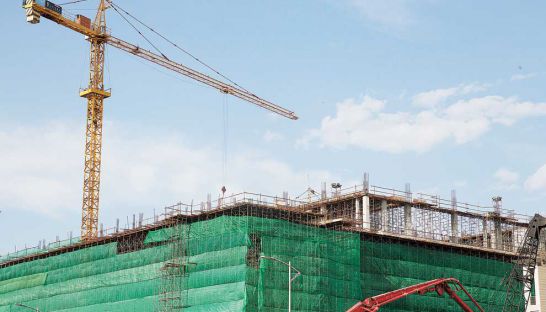Restaurants and beer gardens flourish next to sewage canal
Restaurants and beer gardens flourish next to sewage canal
Despite the smell, and amid cheap rents and flooding, beer gardens, restaurants and karaoke parlours have traditionally found a home along the open Boeung Trabek sewage canal. Residential developments fuelled by local and foreign investment, have, however, led to the soaring of prices in areas slightly further from the main canal, posing the question of what can be done to encourage residential development.
Van Chanthorn, managing director of Towncity Real Estate, explained that hospitality businesses there are oblivious to the sewer and its naturally accompanying smell.
While the price for real estate along Mao Tse Tung Boulevard vary from $1,500 to $3,500 per square meter, property along the inner roads of the same area close to the sewer range from $1,500 to $2,200, going as low as $1,200 per square metre for spaces right along side it.
According to Chanthorn, the area becomes even more attractive for hospitality because the road is easily accessible, although he admitted this only applied to one side of the sewer.
“If we drive from Yokunthor High School, the left side of the canal is trickier to develop because it’s right next to the canal. On the contrary, there’s a road between the canal and the houses on the other side, so it’s easier to open businesses like beer gardens,” he said.
However, Men Dyna, manager of a seafood restaurant along the main canal, said the flooding has been getting worse over the past few years ever since Boeung Tumpun Lake was filled.
“This area floods every time there’s a heavy rain, and water goes inside the house,” he said, lamenting the fact that he has to close the restaurant whenever there is heavy rain.
Dyna and his siblings have been renting two joint houses and have worked at a nearby restaurant for several years. The rent has recently increased from $850 to $950 a month.
Despite that, the low rental cost outweighs the flooding and the odour from the sewer, according to Dyna.
“I was afraid that the smell might affect the customers coming in, but the rent fee is reasonable,” he explained.
“It’s hard to find a similar place at this price,” he said, adding that rental fees in other areas might be as high as $1,500 to $2,000 a month.
Another vendor along the Boeung Trabek drain, Im Sokunthea, who has been living there for 20 years, said people would often cover their noses when driving by.
She added, “[The canal and the flooding] affect the land price. Foreigners wouldn’t want to live around the canal.”Chanthorn echoed that the development potential for the area along the sewer excludes high-end residential developments like condominiums or office space that mostly cater to foreigners.
“Because the construction cost is the same, some people would rather go a bit further away from the canal to get a better space, even if it means paying extra,” he said.
Regardless of that, Chanthorn explained that as long as there is vacancy along the canal areas, people are bound to buy it and added, “If the canal is covered, the road will expand. In that case, the area might grow into a [more] commercial district.”
That the canal will eventually be covered seems unlikely, however. The canal was built open to alleviate the problem of severe floods in Boeung Trabek, according to an Asian Development Bank report from 2005, dubbed “Phnom Penh Water Supply and Drainage Project in Cambodia”.
The rehabilitation project for Boeung Trabek canal was completed at the end of 2002, and together with Toul Sen canal, amounted to 3.5 kilometres of connected drainages that cost around $4.7 million.
Upon completion of the rehabilitation project, the drainage component reduced the flooding in more than 40 per cent of the inner city.
On that matter, City Hall Spokesman, Long Dimanche, said there is no plan to cover or further rehabilitate the canal at the moment so it will remain a stronghold of local hospitality in a neighbourhood of mushrooming residential development.














